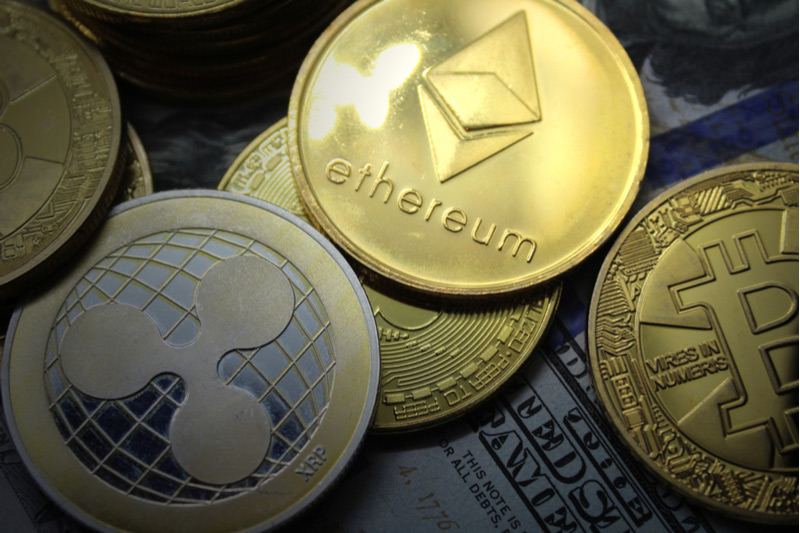How are energy investors positioned?
Crypto crime has become a major concern to regulatory authorities. There have been sharp increases in crypto crime, especially hacks related to fraud, in recent years as Web3 becomes an integral part of daily life. But the spread is not even and there are many emerging trends and patterns to crypto crime, which can be best understood through deep blockchain analytics.
Crypto CrimeTrends and Statistics
Hacks on Ethereum (or dApps built on Ethereum) are rampant because of its smart contract capabilities and wide-scale dApp usage. Last year, the Ethereum-based Ronin network was hacked for $625 million.
Ethereum currently has ten times more transaction volume than the second blockchain (Tron), with nearly 70% of the market. DeFi fraudsters often target cross-chain bridges when tokens are being transferred from one chain to another, and these bridges are typically built on the Ethereum network. Binance and Ethereum have the most unique active wallet (UAW) addresses, as gauged from January 2022 to January 2023.
A crypto-crime report from Crystal Blockchain outlined some of the statistics regarding the theft of digital tokens, highlighting that China and the USA are the worst hit by fraud and hacks. The US takes the top spot for the total number of incidents against entities, with 14 major attacks since 2011.
However, China is the worst affected in terms of overall value. This is due to two prominent hacks, PlusToken in 2019 ($2.25 Billion) and WoToken in 2020 ($1 Billion). The UK, South Korea, and Japan are also heavily affected by crypto scams. Since 2011, there have been 461 high-profile incidents across 45 countries, for a total of $16.7 billion in stolen crypto, mainly ERC-20 tokens.
Why Do Certain Jurisdictions Experience High Levels Of Crypto Fraud?
The top five areas for security breaches related to crypto are the USA, China, Japan, South Korea, and the UK.
There were many exchanges in China in the early days of cryptocurrency before the government cracked down on it. Binance, one of the world’s largest exchanges, moved from China following the government ban on trading in 2017. Huboi, another Chinese exchange, moved its headquarters to South Korea.
The USA has also experienced high levels of crypto fraud. A lot of token offerings launched in the USA were later revealed to be in violation of the Securities and Exchange Commission (SEC) rules for selling securities. While some had good intentions and simply fell foul of unclear regulations, many were outright Ponzi schemes.
Mainly, cybercriminals will follow the money, and exploit any opportunities. It makes sense then, that regions where there are more centralized exchanges will be targeted more frequently. Where there are strict rules about the movement of money, more people will turn to crypto, which could potentially result in more incidents of fraud.
The Various Types Of Crypto Fraud
There are many ways that cybercriminals can conduct a fraud operation. One of the most common is the rug pull. This is where a team of fraudsters entices investors into a specific project and runs off with the funds. They are basically scam projects.
There are also various subcategories of rug pulls. For instance, a pump-and-dump scheme is where investors are encouraged to invest in a specific token, and then the fraudsters sell it all, reducing the price to nothing. This can be enormously profitable if the fraudsters also put options on the token or use different mechanisms to leverage the price decrease.
Developers can also defraud investors by coding tokens so they can only be sold by them. Rug pulls are not always illegal in the sense that initial investors have a right to sell at any time. But if claims are made to investors that turn out to be completely false, then legal authorities could easily launch an investigation.
According to the same Crystal Blockchain report, most crime occurs through decentralized protocols involving smart contracts. In 2022, over USD $2.6 billion was lost through 132 DeFi attacks. $277 million was lost due to security breaches in 13 instances, while $1.3 billion was lost in fraud schemes. The report also noted that rug pulls were the most popular fraud mechanism in 2022 and that Ethereum is the most popular chain for rug pulls, followed by BNB.
Preventing Crypto Fraud
The prevention of crypto fraud is an ongoing issue that will require cooperation between regulatory authorities and Web3 developers, and exchanges. Investors continue to get duped by simple methods and are not conducting due diligence to investigate projects, typically being too easily misled in the hope of enormous profits. With AI and other technologies, fraud will get even more sophisticated as time goes by.
Exchanges and Web3 providers will also need to have an in-house compliance team alongside risk mitigation procedures to ensure customers’ funds are safe, secure, and insured. Blockchain analytics can go a long way to understanding the path through which stolen crypto travels and how to prevent a breach from occurring in the first place.
The post Why Most Cryptocurrency Fraud Cases Take Place in China and the US appeared first on Coin Edition.
